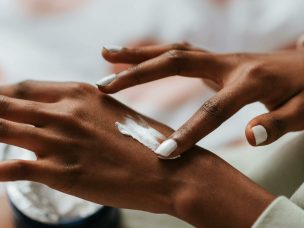Dr. Martinez-Diaz discusses the things that prevent Black and Brown people from getting access to treatment for their vitiligo. He talks about how these conditions can be prevented, as well as what steps are being taken to ensure that everyone has equal access to treatment.
MD Newsline: Are there things that prevent Black or Brown people from getting access to information or treatment?
Dr. Martinez-Diaz: So let’s start with access to dermatologic care, as number one. Number two I would say insurance coverage towards treatments for vitiligo is very limited um, and then number three also just the ability to be able to comply with certain treatments. And I would just say those are the top three things that I typically encounter. It’s almost disheartening to know that among the United States board-certified dermatologists there’s about three percent of us dermatologists that may identify as African-American. There’s about maybe three to four percent that are Hispanic or Latinx on the dermatologists’ end, so access to a diversity of specialists with a skin of color, training, and education is very limited. More importantly, vitiligo, because it’s a disorder of visual impact, not necessarily direct physical impact, I think to the eye of health insurance companies they are seeing it as easily distinguishable as cosmetic when it’s not really cosmetic it’s really caused by a medical problem so, therefore, we battle a lot with insurance companies as far as what do they cover, what medications do they cover what treatments do they cover and so forth. For instance, I have a patient that I’ve been taking care of for the last several years where during the pandemic he wanted to get a light therapy box covered so he could do it at home and most insurance companies were fairly understanding during the pandemic that patients normally would have to go into the hospital and get phototherapy treatments but his insurance company kept denying the at-home therapy box because they said that they want to only pay for it when in the hospital setting. But in the midst of a pandemic who’s going to be going to the hospital three times a week for therapy sessions that they could do at home, so those are some of the struggles and battles that we face we can care for our vitiligo patients.







